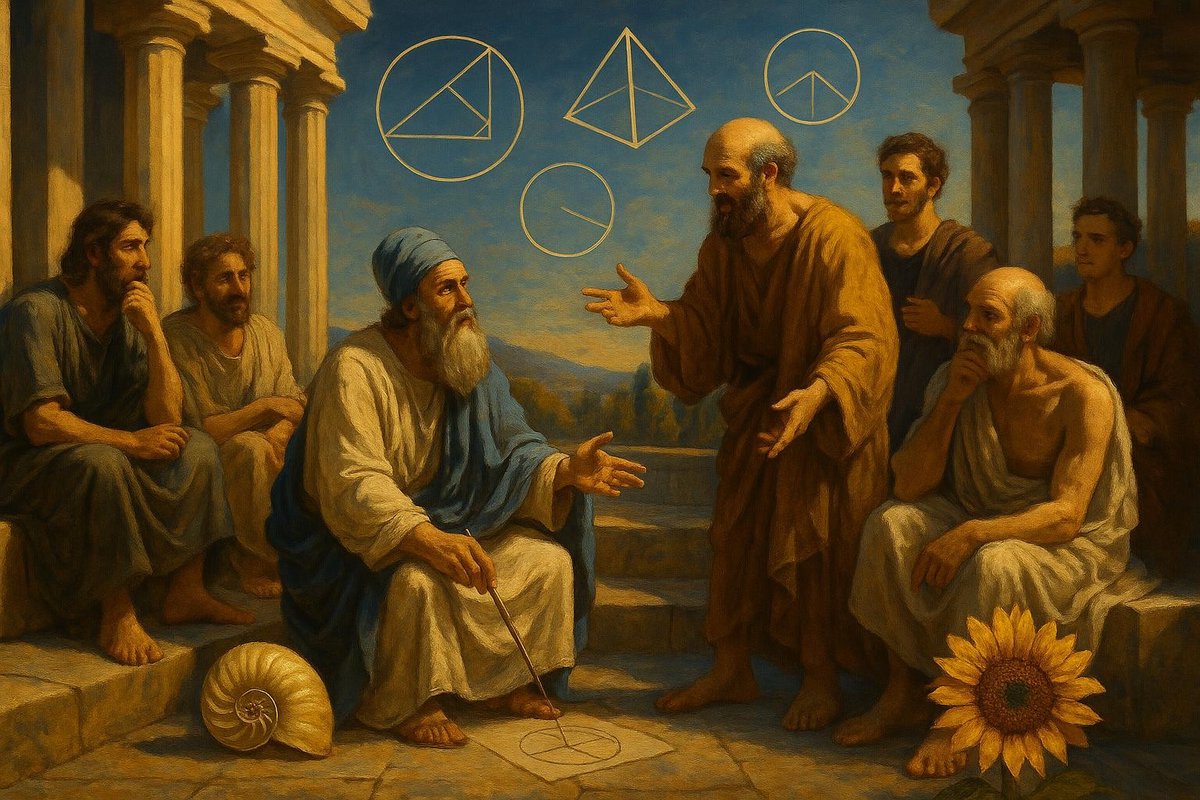
Hypothesis & Context: The Seeds of a Mathematical Marvel
What do sunflowers, the Parthenon, and Leonardo da Vinci’s ‘Vitruvian Man’ have in common? Interestingly, all share a mysterious mathematical constant known as the Golden Ratio. Many people believe this ratio, approximately 1.618, defines aesthetic balance and harmony. But how did this beguiling concept come about? Let’s unravel this captivating tale.
The Golden Ratio’s roots stretch back to ancient Greece, where mathematicians like Euclid sought to explain the geometry behind natural phenomena. It was Euclid’s work in ‘Elements,’ around 300 B.C., that first described the division of a line into two parts such that the whole length to the longer part is the same as the longer part to the shorter. But what intellectual puzzle inspired such an inquiry?
- The Greeks’ pursuit of symmetry and proportion in art and architecture.
- The observation of patterns in nature, prompting questions about a universal order.
- Philosophical debates on beauty, balance, and the divine proportions.
These intertwining threads created a fertile ground for exploring the Golden Ratio, blending mathematics with art and philosophy.
Setup & Method: An Ancient Experiment in Proportion
Imagine stepping into the bustling agora of ancient Athens, where scholars discussed ideas that fused mathematics with art. The Golden Ratio emerged from a blend of rigorous geometric studies and the sublime aesthetics sought by artists. No wonder this concept flourished through both empirical observation and philosophical inquiry.
How did thinkers like Euclid and later Fibonacci come to define and explore this ratio? Through a series of geometric experiments and numerical sequences, they unveiled its presence everywhere, from the spiral of a nautilus to the structure of classical temples.
- Euclid’s proposition of dividing lines in his ‘Elements’ – the geometric birthplace of the ratio.
- Fibonacci’s sequence, introduced in 1202, which approaches the ratio via natural growth patterns.
- Artisans and architects using these principles to guide their designs, seeking harmony.
These endeavors blurred the lines between rational deduction and artistic intuition, laying out a path that would captivate minds for centuries.
Results & Reactions: Embracing Beauty in Ratio
As time goes on, the Golden Ratio has become a beacon of perfection in both natural and human-made marvels. When Fibonacci explored the growth of populations using his famous sequence, he inadvertently lent the Golden Ratio even more significance. This ratio seemed to whisper secrets about growth patterns, from the petals of flowers to the spirals of galaxies.
Over centuries, the Golden Ratio became a symbol of beauty. It enchanted Renaissance artists like Leonardo da Vinci, who reportedly used it to structure his artworks, and inspired architects such as Le Corbusier. Why did this ratio captivate so many?
- The ratio’s intrigue lies in its omnipresence in nature and human constructs.
- Its simple yet profound mathematical properties inspired artists and scientists alike.
- Debates erupted over whether beauty is intrinsic to the ratio or a cultural construct.
The Golden Ratio became a fusion point for disciplines, reminding us of the deep interconnectedness between numbers and nature.
Implications: Harmony Beyond Mathematics
Why does the Golden Ratio continue to inspire wonder? Its implications stretch far beyond the confines of mathematics, touching art, architecture, and even psychology. The ratio offers a window into how humans perceive beauty, implying that our attraction to these proportions is rooted in both biology and culture.
In modern times, the Golden Ratio has found its way into digital design, product aesthetics, and even marketing. Its promise of harmony and balance still resonates, suggesting a universal blueprint for attractiveness and efficiency. But can something so mathematically simple truly encapsulate the essence of beauty?
- The Golden Ratio bridges the gap between logical precision and artistic fluidity.
- Its application ranges from the grand designs of skyscrapers to the subtleties of logo design.
- It invites continual exploration and debate, challenging our perceptions of order.
As we stand on the shoulders of giants, the Golden Ratio invites us to ponder the elegant language of numbers that silently shapes our world.
In conclusion, the Golden Ratio is more than just a number; it’s a testament to the enduring quest for understanding beauty and order in the universe. Through the ages, it has inspired countless explorations in art, science, and nature. Its story is a reminder of the intricate tapestry woven between logic and aesthetics.
Fuel Someone Else’s Curiosity
Did this journey into the Golden Ratio spark your interest? Share it with a friend or colleague, and ignite a fascination for the mathematics of beauty. Join the conversation and explore how such ancient concepts continue to shape our modern world. Curiosity is a flame best shared – who knows what mysteries you might unlock together?

Leave a Reply